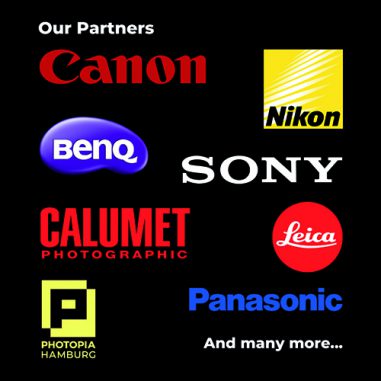Despite their svelte 0.77-inch stainless-steel frames, the ST5500 and the ST5000 house impressive Schneider-Kreuznach lenses which boast a design inspired by the mirror-writings of Leonardo da Vinci. When powered up, the cameras’ lens barrels extend and the lens specifications, including focal length and speed, appear with a hidden colour accent in the concave reflective ring that surrounds each lens. These specifications are inscribed in reverse on the cameras’ lens barrels and disappear when the lens naturally retracts into the camera body. The distinctive design makes an immediate and lasting impression.
The Samsung ST5500 and ST5000 are also highlighted by a slanted design, which places the back of the camera at a seven degree angle. This subtle design accent proves to be extremely useful for consumers who are interested in taking self-portraits and group shots. The issue that many consumers face when taking self-portraits or group shots with traditional digital cameras is the camera must be positioned much higher than the subjects in order to capture the complete image. Thanks to the seven degree angling of the ST5500 and ST5000, the lenses will always be pointed at the subjects’ faces even if the camera is positioned at a lower angle. Furthermore, unlike traditional shutter buttons which sit flat on top of the camera, the ST5500 and ST5000 offer slanted shutter buttons which make the cameras more comfortable to hold and operate.
The ST5500 allows consumers to share their video and photos on the go without being tethered to their laptops or home PCs thanks to its wireless connectivity options, which include Bluetooth 2.0, Wi-Fi and DLNA. Using an available Wi-Fi connection, users can send a digital image to any email address using the camera’s touch-screen QWERTY keypad or selecting those stored the camera’s address book. Users can also utilise the QWERTY keypad to include text within the body of the email. The ST5500’s Wi-Fi connection also allows users to upload their images directly to popular websites such as Facebook, Picasa and YouTube, as well as SamsungImaging.com.
The ST5500 also includes Samsung’s AllShare feature, which allows consumers to share content, including photos and videos, with other DLNA certified devices such as HDTVs and digital photo frames. This gives the ST5500 user a seamless way to wirelessly transfer 720p HD video in addition to digital still images. To maximise speed and efficiency, all images transferred through Wi-Fi will be reduced to a resolution of two mega-pixels.
Bluetooth 2.0 connectivity is also included in the ST5500, allowing users to share and transfer photos directly with Bluetooth 2.0 compatible mobile phones. When using Bluetooth 2.0, the ST5500 will automatically resize the digital image to a resolution of 1024×768 (1MB).
The Samsung ST5500 incorporates WVGA AMOLED technology in an impressive 3.7-inch wide screen, while the ST5000 features a 3.5" touch screen TFT LCD. Both cameras’ massive displays house Samsung’s Smart Gesture touch-screen user interface which is complimented by an internal Gravity sensor for added ease-of-use. Smart Gesture is one of the most advanced and accurate touch-screen user interfaces on the market, and it gives users the ability to access and use key features with either a simple tilt or a hand gesture. The Smart Gesture adds a level of fun to the way users interact with and enjoy their content, allowing them to quickly scroll through their photos with a swipe of their finger or by slightly tilting the camera in either direction. Users can also easily delete photos from their library using Smart Gesture by marking an "X" on the screen with their finger, or rotate an image by drawing a circle (O) on the screen.
Smart Gesture UI also offers useful auto-focusing options such as object tracking and one-touch auto focusing. Object tracking enables users to focus on any area by touching the location on the screen with their fingertip. Once the object or location is selected, the cameras will lock and keep their focus on the subject even if it’s moving within the frame. Users can also proceed to take that photo by continuing to hold the location with their finger for two seconds, thanks to the cameras’ one-touch auto focusing capabilities.






